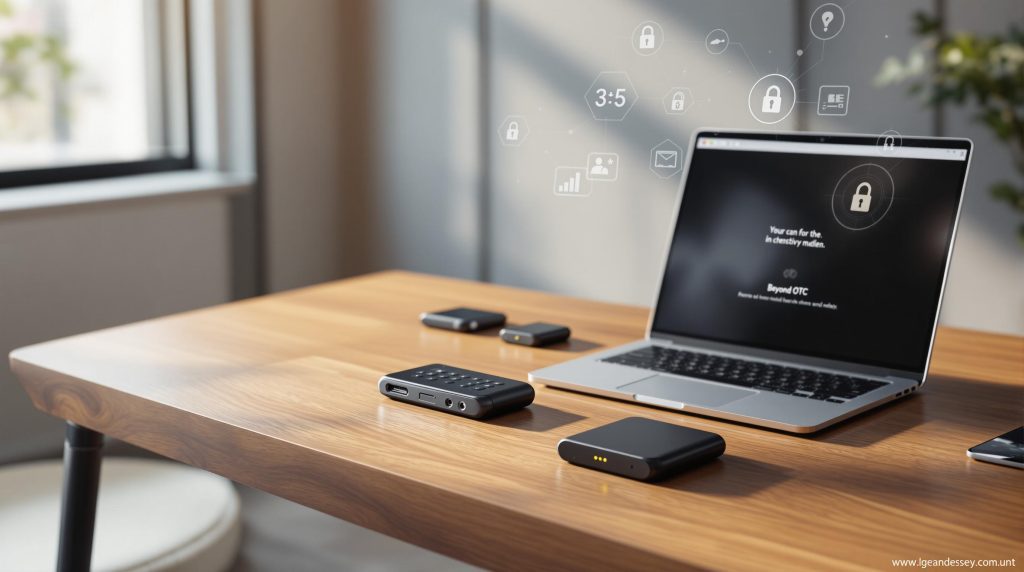Multisig wallets require multiple approvals (like 2-of-3 or 3-of-5) for transactions, making them more secure than single-signature wallets. They’re ideal for protecting large holdings and preventing theft, fraud, or accidental loss. Here’s a quick guide to secure your multisig wallet:
- Use hardware wallets from trusted brands like Ledger or Trezor.
- Store keys safely in diverse locations (e.g., safety deposit boxes).
- Update software regularly and audit smart contracts.
- Plan for recovery by testing backup and recovery processes.
- Strengthen access control with time-locks, role-based permissions, and secure communication.
By following these steps, you can reduce risks like key loss, internal threats, and software vulnerabilities while ensuring your digital assets remain secure.
Now, let’s dive deeper into how multisig wallets work, their risks, and detailed security strategies.
Safe{Wallet}: How to Securely Set Up and Use Your Safe …
What Are Multisig Wallets
A multisignature (multisig) wallet requires multiple private keys (M-of-N) to approve a transaction. This ensures no single keyholder can unilaterally move funds.
How They Work
In an M-of-N setup (like 2-of-3), participants create private keys, decide on the number of required signatures, and share keys among designated signers.
Use in OTC Trading
Multisig wallets play a crucial role in securely handling large-scale OTC trades. For example, BeyondOTC has facilitated over $55 million in altcoins and $250 million in Bitcoin transactions.
Security Benefits
Here’s why multisig wallets are safer than single-signature wallets:
- No single point of failure: Authority is distributed among multiple keyholders.
- Heightened theft protection: Multiple keys must be compromised to access funds.
- Fraud prevention: Oversight is built into the transaction process.
- Recovery options: Lost keys don’t necessarily mean lost funds.
- Independent verification: Transactions require checks from multiple parties.
Up next, we’ll dive into the key security risks associated with multisig wallets.
BeyondOTC has facilitated transactions of over $55 million in altcoins and $250 million in Bitcoin.
Main Security Risks
While multisig wallets offer various advantages, they are not without vulnerabilities. Here are four key risks: key loss or theft, internal threats, software issues, and backup failures. Let’s break down how each of these can impact security.
Key Loss and Theft
Losing or having keys stolen can have severe consequences, often due to poor physical security or careless management:
- Theft or damage to devices can result in permanent loss of access.
- Social engineering attacks may manipulate keyholders into sharing sensitive access.
Internal Security Threats
Even authorized users can unintentionally or maliciously jeopardize the system:
- Signers who are compromised or collaborate maliciously can bypass approval safeguards.
- Poorly implemented access controls can leave gaps in oversight.
- Employee turnover can complicate or delay proper access updates.
Software Issues
Gaps in software security can lead to major vulnerabilities:
- Bugs in outdated software or smart contracts may expose funds to risk.
- Problems integrating the wallet with other systems can create weak points.
- Compatibility issues with updates may block access to new features or fixes.
Backup Failures
A poorly designed backup system can undermine the entire security setup:
- Storing keys in a single location increases the risk of total loss if compromised.
- Lack of a thorough recovery plan can delay or prevent access to funds.
- Missing or incomplete records of keyholders can lead to confusion about signer roles.
- Recovery processes that haven’t been tested may fail when urgently needed.
Addressing these risks requires a well-thought-out security strategy, which will be explored in the next section.
sbb-itb-7e716c2
Security Guidelines
Follow these steps to safeguard multisig wallets effectively.
Hardware Wallet Setup
Choose hardware wallets from trusted brands like Ledger or Trezor. Ensure they remain sealed until setup in a secure, camera-free location. Install the latest firmware, create a PIN with at least 8 digits, and verify functionality with small test transactions.
Key Storage Locations
Store keys in diverse, secure locations such as bank safety deposit boxes, fireproof safes, or locked rooms. For added protection, split seed phrases using Shamir’s Secret Sharing. Keep a record of these storage locations in encrypted files for easy reference.
Software Maintenance
Stay updated with regular maintenance:
- Review patches weekly
- Update firmware monthly
- Conduct smart contract audits quarterly
- Schedule penetration tests every six months
- Perform annual protocol reviews
Recovery Planning
Prepare for emergencies like key compromises, hardware failures, or signer unavailability. Document recovery procedures and test them quarterly with a small wallet. Maintain encrypted records detailing signer roles, storage locations, emergency contacts, and seed phrases.
Access Control Setup
Strengthen access control by:
- Requiring multiple approvers for transactions
- Adding time-locks for large transfers
- Enforcing role-based access permissions
- Logging all changes
- Implementing cooling-off periods for new signers
Next, we’ll discuss risk prevention strategies, including two-factor authentication and secure communication methods.
Risk Prevention Methods
This section provides practical steps to help reduce the risks mentioned earlier, building on the security guidelines.
Two-Factor Authentication
- Enable 2FA on all wallet interfaces using hardware security keys.
- Require biometric verification to access signing devices.
- Use time-based one-time passwords (TOTP) for administrative tasks.
Regular Key and Signer Updates
- Rotate keys every quarter to address internal threats and minimize key compromise risks.
- Update signer lists during each key rotation.
- Log all changes securely in an encrypted audit log.
Secure Communication Channels
- Use end-to-end encrypted messaging for exchanging keys.
- Set up dedicated, secure channels for approving transactions.
- Confirm recipient addresses using multiple communication methods.
Multisig Configurations
- 2-of-3 setup: Balances security with ease of use.
- 3-of-5 setup: Adds redundancy, ideal for larger teams.
- 4-of-7 setup: Offers enhanced security for institutional-level holdings.
These steps strengthen the connection between your policies and daily operations, making your wallet setup more resistant to common threats.
Conclusion
Protecting digital assets with multisig wallet security relies on three key areas:
- Physical Security: Use hardware wallets and store keys securely.
- Operational Security: Regularly rotate keys and keep software up to date.
- Process Security: Implement strict access controls and secure communication channels.
By working with BeyondOTC, institutional clients gain access to trusted multisig partners and OTC trading support [2].




